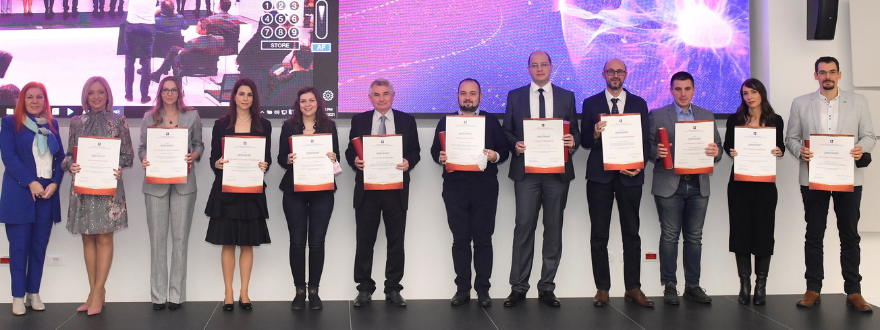
27 Dec Award of the Chamber of Commerce of Serbia for the best doctorates with application in the economy for research realized with the support of the Center for Technology Transfer
Research associate of the Institute of Physics in Belgrade, Dr. Miljan Dašić, is one of the winners of the annual award of the Serbian Chamber of Commerce for the best doctorates for application in economics. Dr. Dašić defended his doctoral dissertation on September 23, 2019, at the Faculty of Physics, University of Belgrade. Dr. Dašić’s doctorate was done at the Center for the Study of Complex Systems and its Laboratory for the Application of Computers in Science, under the mentorship of Dr. Igor Stanković. In addition to this recognition at the national level, Dr. Miljan Dašić also received the award for the best doctorate realized at the Institute of Physics in 2019.
Dr. Dašić realized part of his thesis with the support of the Center for Technology Transfer of the University of Belgrade. Business and technical cooperation with Toyota Motor Europe from Belgium was supported by legal and advisory services of the Center. During the two years of the mentioned cooperation, three cycles of research were realized with the aim of developing new computer simulations for the development of lubricants based on ionic liquids, with the aim of their application in reducing friction and abrasion in car engines.
The realized research and the doctorate represent quality and lasting achievement in the transfer of technology from basic scientific research to the industry, which the Center for Technology Transfer of the University of Belgrade continues to monitor and support. The parameters of the simulation setup were chosen in accordance with the system required by the industrial partner, but the approach is general, which gives wide possibilities of the application taking into account that friction and fraying are harmful phenomena present in many industries. The developed simulations enable the molecular design of optimal ionic liquids that simultaneously meet the requirements for low friction and fraying prevention. The key advantage of using computer simulations is the ability to test a wide parametric range, which is not the case for experimental research with specific ionic liquids.





